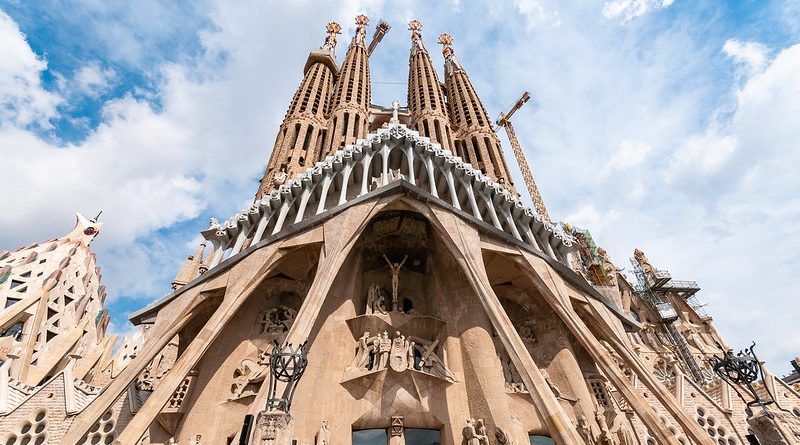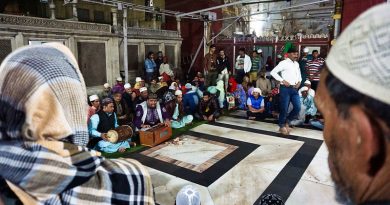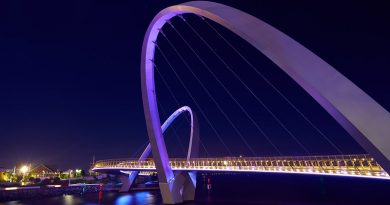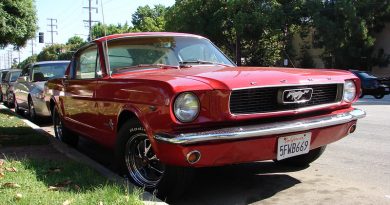La Sagrada Familia, Barcelona
The Facts:
Where: Barcelona, Spain
When: Constructed over 120 years and originally overseen by by Antoni Gaudi in 1882 until his death in 1926, still unfinished!
Built by: Antoni Gaudi, Spanish architect and artist, hugely popular known as the face of Catalan architecture. He was fond of nature, and work is often cited as being inspired by his love of natural design and modernism.
History: The Sagrada Familia, is still incomplete. Gaudi took over the construction of the church in 1883, and worked on it until he died. The present design being worked on is based on models he left. Depending on who you ask, the estimated completion date for the massive church is either 2017 or 2026.
Go there for: Towering views over Barcelona. Awe-inspiring by its sheer verticality, and bonkers construction. Be wary of the queues so get there early, it’s Spain’s most visited monument with over 2.8 million visitors a year!
La Sagrada Família is one of Barcelona’s must-see locations and one of the world’s must-see churches. A project that was launched in 1882 and is still being worked on today, La Sagrada Família is a masterpiece not bound by time, or simplicity.
Original construction for the famed church began in early 1882 as a project of architect Francisco de Paula del Villar. In 1883, La Sagrada Família was taken over by Antoní Gaudi who would spearhead the construction right until his death 43 years later in 1926. The church is located right in the center of Barcelona which made Gaudi even more passionate for his creation considering this was where he had previously worked, studied, and resided with his family.
The sense of community is an evident theme in both the funding and construction of La Sagrada Família. It is an “expiatory church” meaning it is funded entirely by outside donations – including those from its 2.5 million yearly visitors. It attracts not only tourists, but serves as on object of study for architecture and religion students. Gaudí once declared that the church is, “made by the people and is mirrored in them. It is a work that is in the hands of God and the will of the people.” Gaudi understood that his architectural wonder would not be completed before his time and his approach to the construction reflects this in the most positive way. Rather than leaving a frazzling amount of unfinished ends to the next round of workers, Gaudí constructed La Sagrada Família in specific major parts. The logic behind this strategy was that each generation of workers would work to a certain goal and also have a proud and identifiable contribution to the project.
Gaudí had not only a focused building plan for the future, but a focused plan for the on-site construction as well. A sharp minded man, Gaudí understood that the complexity of his plan would call for extreme efficiency. He managed to implement as many modern assembly strategies, which (for the time) included installing small railway tracks for easily moving materials as well as bringing in cranes. However, no matter how well-thought or pre-planned, Gaudí could not prepare for what would happen when the Spanish Civil War erupted in 1936. During the chaos, Gaudí’s workshop was burned, and many primary models and original plans of La Sagrada Família had fallen with his factory. Some documents and books were recovered but this was still a huge setback for the architect.
Made of 22 types of stone, the church is rich in detail from its smallest corners to its three frontal portals. Major meaning and symbolism hide behind each small detail and many parts have special dedications. The front base is comprised of the side-by-side Portal of Hope, (dedicated to the virtue of Joseph), Portal of Charity (dedicated to the virtue of Christian Charity) and Portal of Faith (dedicated to the virtue of Mary). Above that, one will find a large Cyprus tree structure encompassed by white doves. This is an additional symbol for the love of Jesus Christ.
The current construction brings even more symbolism to the already meaningful work. The finished project will have 18 towers: 12 dedicated to the apostles, 4 dedicated to the evangelists, and one to each Jesus and Mary.
 In 2010, Pope Benedict XVI declared Basilica on La Sagrada Família which allowed it to become a sacred place of public worship.
In 2010, Pope Benedict XVI declared Basilica on La Sagrada Família which allowed it to become a sacred place of public worship.
La Sagrada Família is easily accessible via the “Sagrada Família” metro in addition to numerous bus options. Opening at 9:00 AM, the church closes at 6:00 PM during the months of October to March, and not until 8:00 PM if your visit falls between April and September – but be aware of special events. Ticket prices vary amongst different packages (Do you want an audio guide? A look at the towers? A stroll through the Gaudi House Museum?) but general entry to the Sagrada Família is 14,80 euros and the most expensive package tops off at 23,80 euros. Also, if you have any young family members or friends, then bring them along because children ten and under are granted free admission.
Can’t make it to Barcelona? Visit the La Sagrada Família website (www.sagradafamilia.cat) to tune into live Mass and virtual tours. Or, wait till (an estimated) 2030 to see the finished masterpiece!
Further Reading:
Barcelona Book. La Sagrada Família.
<http://www.barcelonabook.com/la-sagrada-familia.html>
Basilica de La Sagrada Família. Offical Website.
<http://www.sagradafamilia.cat/sf-eng/index.php>




